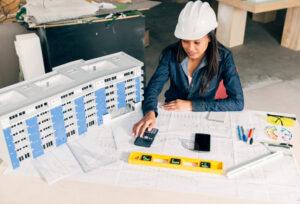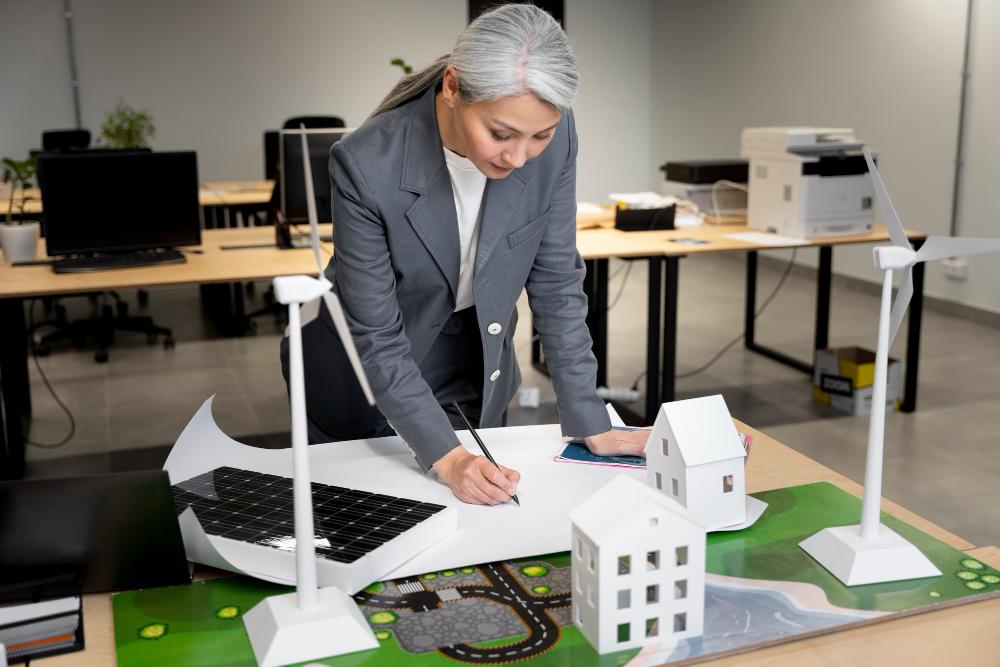Accurately predicting a building’s energy use is one of the biggest challenges in the design and operation of modern commercial buildings. Too often, the predicted energy performance doesn’t match real-world results, a mismatch known as the energy performance gap.
That’s where TM54 Energy Assessments come in. Developed by CIBSE (Chartered Institution of Building Services Engineers), TM54 provides a robust framework for assessing operational energy use, ensuring that buildings perform as intended once occupied. For developers, designers, and building owners across the UK, TM54 Energy Assessments for Commercial Buildings have become a crucial part of achieving accuracy in energy modelling and long-term sustainability goals.
Understanding TM54 Energy Assessments
TM54 assessments evaluate how a building will use energy in operation, not just how it performs in theory. Unlike compliance models such as Part L or EPC calculations, which assess regulated energy only, TM54 takes a deeper look into how the building will truly operate, considering factors such as:
-
- Equipment and occupancy patterns
- Unregulated loads (like IT and appliances)
- Heating, cooling, and lighting systems
- Building management and maintenance behaviour
At CCA Environmental, our TM54 Energy Assessments for Commercial Buildings help bridge the gap between design-stage predictions and real operational performance, ensuring buildings meet both sustainability targets and client expectations.
In addition to TM54 services, we also assist with MEES compliance for commercial buildings, ensuring you meet the UK minimum energy efficiency standards EPC requirements before leasing or selling your property.
Why TM54 Energy Assessments Are Essential for Accurate Energy Modelling?
Accurate energy modelling forms the backbone of an effective building performance strategy too. Here’s how TM54 improves energy modelling accuracy in UK commercial buildings:
a. Reduces the Energy Performance Gap
By modelling operational factors that standard compliance methods overlook, TM54 identifies where design assumptions may fall short. This approach helps reduce costly inefficiencies post-construction and ensures performance aligns with design intent too.
b. Enhances Energy Efficiency
TM54 helps uncover opportunities for energy savings and optimisation early in the design phase. Through realistic modelling, the energy consultants can test scenarios and refine systems for maximum energy efficiency before installation too.
As part of this process, CCA Environmental. also offers TM54 dynamic simulation modelling to provide deeper insights into real operational behaviour and performance optimisation.
c. Supports Net Zero Carbon Goals
For businesses working towards net zero carbon, TM54 assessments are vital. They provide the detailed insights needed to predict future operational energy use and support accurate carbon modelling and help organisations stay compliant with UK sustainability standards as well.
d. Builds Confidence for Stakeholders
TM54-based modelling gives clients, designers, and facility managers greater confidence in predicted performance, helping secure planning approvals, funding, and green certifications such as BREEAM.

TM54 Energy Modelling: Step-by-Step Overview
A typical TM54 energy assessment involves several structured stages:
-
- Data Collection – Gathering building design information, occupancy data, and system details.
- Model Setup – Creating an operational energy model based on realistic use profiles.
- Scenario Testing – Evaluating multiple operational scenarios to reflect potential variations.
- Performance Analysis – Reviewing results against benchmarks and identifying performance risks.
- Reporting and Recommendations – Providing insights for improving energy efficiency, system design, and management strategies.
At CCA Environmental, our team uses advanced simulation tools and CIBSE-approved methodologies to deliver TM54-compliant energy modelling tailored to your project’s specific needs. We also offer pre-construction TM54 reports for early-stage design teams seeking accuracy before building works commence.
Best Practices for TM54 Energy Assessments in UK Projects
For reliable results, TM54 assessments should follow a set of best practices:
-
- Start Early: Integrate TM54 modelling at the design stage for maximum influence on decision-making.
- Collaborate Across Disciplines: Involve architects, M&E engineers, and sustainability consultants to ensure data accuracy.
- Use Realistic Assumptions: Factor in actual user behaviour, equipment loads, and operating schedules.
- Regularly Review and Update Models: Keep the assessment aligned with design changes and evolving operational strategies.
CCA Environmental follows these best practices on every project to ensure precise, actionable, and compliant energy models. This process includes predictive energy modelling TM54 methods that simulate how energy will be consumed once the building is in operation.
Benefits of TM54 Modelling for Energy Efficiency
-
- Improved operational performance and reduced running costs
- Enhanced occupant comfort through better system design
- Accurate lifecycle cost forecasting
- Evidence-based sustainability compliance
- Informed retrofit and refurbishment planning
By investing in a TM54 energy assessment, building owners can future-proof their assets, ensuring long-term value and environmental responsibility.
Our experts can also integrate EPC consultancy for MEES regulation and Level 5 EPC assessor services to ensure compliance across your entire building portfolio.

CCA Environmental – Your TM54 Energy Assessment Partner
At CCA Environmental, we specialise in TM54 Operational Energy Assessments for commercial buildings across the UK. Our team of qualified energy assessors provides:
-
- CIBSE TM54 assessments and modelling
- TM52 thermal comfort and overheating analysis
- Dynamic Simulation Modelling (DSM)
- SAP, SBEM, and Part L compliance
- BREEAM energy credits support
- Level 5 EPC services for complex buildings
Whether you’re developing a new commercial project or optimising an existing one, our tailored energy modelling solutions ensure you achieve accuracy, compliance, and sustainability from concept to operation.
We also provide Commercial solar panel installation solutions to help reduce operational energy costs and enhance building sustainability credentials.
Frequently Asked Questions (FAQs) on TM54 Energy Assessments for Commercial Buildings
Q1. What is a TM54 Energy Assessment?
A TM54 assessment is a detailed evaluation of how a building is likely to use energy once in operation. It helps predict real energy consumption beyond design-stage calculations.
Q2. How does TM54 differ from Part L or EPC assessments?
Part L and EPC focus on compliance and regulated loads only. TM54, however, includes unregulated energy uses and operational factors, making it far more accurate for predicting real-world performance.
Q3. Who needs a TM54 Energy Assessment?
TM54 assessments are recommended for all commercial building projects – especially offices, healthcare facilities, retail, and education – where operational accuracy and energy performance are key.
Q4. What are the main benefits of TM54 for developers and building owners?
Benefits include improved accuracy, lower operational costs, better energy efficiency, and evidence for sustainability certifications such as BREEAM or LEED.
Q5. When should TM54 assessments be carried out?
Ideally, TM54 modelling should be initiated during the design stage and updated throughout the project to guide key performance decisions.
Q6. Is TM54 a UK requirement?
TM54 is not a statutory requirement but is widely adopted across the UK construction industry as best practice for achieving reliable energy performance predictions.
Conclusion
In an era of rising energy costs and stricter environmental targets, TM54 Energy Assessments for Commercial Buildings are no longer optional – they are essential. They help reduce performance gaps, improve efficiency, and support carbon reduction goals through precise operational modelling.
Partnering with CCA Environmental. ensures your energy modelling process is accurate, compliant, and future-ready, driving both performance and sustainability outcomes.
📞 Call 020 3514 3080 or reach us via our Contact Form to speak with one of our energy specialists today.

